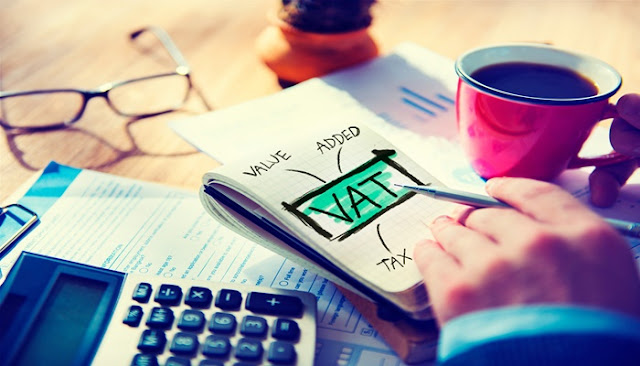Value-Added Tax (VAT) is a critical aspect that every small business owner must grapple with. It's a consumption tax that applies at every stage of a product's production until its final sale. Understanding it, and ensuring your business complies, is not just a legal necessity—it's an integral part of running a successful business.
But why is VAT so important? And how can you, as a small business owner, effectively manage it? These are questions that deserve clear, straightforward answers.
This comprehensive guide aims to provide you with the vital information you need to navigate the world of VAT with confidence and ease.
Understanding VAT: Basic Concepts And Principles
As we explore the topic of VAT, let's start by defining some basic concepts and principles that will help make managing your VAT easier.
• VAT Rates: Depending on the country and the nature of goods or services, VAT rates may vary. For instance, the UK employs three primary VAT rates: standard (20%), reduced (5%), and zero rate (0%). The type of your business offerings determines the applicable VAT rate.
• VAT Thresholds: This is the total business turnover, after which you're required to register for VAT. The threshold varies by country, and voluntary registration is possible even if the threshold isn't reached.
• Taxable Goods and Services: It's essential to distinguish between taxable, exempt, and zero-rated goods and services for accurate VAT calculation and reporting.
Now that we've established these foundational principles of VAT, it's essential to understand why ensuring VAT compliance is so crucial for your business.
The Importance Of VAT Compliance
Being compliant with VAT regulations isn't just about fulfilling a legal requirement. It's about keeping your business operations streamlined and efficient.
• Legal Consequences Of Non-Compliance: Non-compliance can lead to hefty penalties and fines. In the most severe cases, businesses may even face prosecution. Compliance isn't just the law; it's good for business.
• Financial Implications For Businesses: Proper VAT management can impact your business's financial health. This is where initiatives like Making Tax Digital or MTD for income tax come into play. By adopting digital record-keeping and regular reporting of income tax records, businesses can better track their VAT expenses and potentially reclaim VAT paid on certain goods or services.
Compliance isn't just about avoiding penalties. It's about leveraging efficient tax management strategies to positively impact your bottom line. The first step towards effective VAT management and compliance is registering for VAT, which we'll discuss next.
Registration Process For VAT
When your business reaches the VAT threshold, or you anticipate it will, it's time to register for VAT. Here's a brief overview of the process:
• Determine Your Eligibility: First, figure out whether your business needs to be VAT registered. Typically, this is based on your taxable turnover exceeding the VAT threshold in your country. In the UK, for example, the threshold is GBP£85,000 as of 2023.
• Prepare Necessary Information: Before you start the registration process, gather the necessary information. Here's a checklist to help you get started:
o Your business's turnover
o The nature of your business activities
o Your business's bank details
• Register Online: Most countries have an online registration process for VAT. You can do this via the government's website.
Remember, registering for VAT is a crucial step toward compliance. But once you're registered, how do you go about calculating your VAT?
How To Calculate VAT
Understanding how to calculate VAT correctly is essential for accurate reporting and compliance. Here's a basic formula to guide you:
• Identify Your VAT Rate: Identify the VAT rate that applies to your goods or services. This could be the standard, reduced, or zero rate, depending on your country and the nature of your goods or services.
• Calculate VAT: Let's say you sell a wooden table for GBP£500, and the standard VAT rate is 20%. To calculate the VAT, multiply the price of the table (GBP£500) by the VAT rate (20%), which gives you a VAT amount of GBP£100.
• Add VAT To The Cost: Finally, add the VAT amount to the cost of your goods or services. Continuing the example above, the final cost of your product, including VAT, would be GBP£120.
Calculating VAT correctly ensures you're charging your customers accurately and fulfilling your tax obligations. However, managing VAT doesn't end at calculation—reporting and record-keeping are just as important, which we'll explore next.
VAT Record Keeping
The cornerstone of any successful VAT management strategy is proper record-keeping. Here are some guidelines to follow:
• Keep Track Of Sales And Purchases: Keep a detailed record of all sales and purchases your business makes. These records should include the date, the nature of the goods or services, and the amount, including VAT.
• Store Invoices And Receipts: Hold on to all invoices and receipts relating to your business transactions. These will serve as proof of your reported sales and purchases.
• Maintain VAT Account: A VAT account helps to reconcile the VAT you owe and the VAT you can reclaim. It's a summary of output VAT (charged on sales) and input VAT (paid on purchases).
Proper record-keeping is your safety net when it comes to VAT compliance. However, it's not just about keeping records. You also need to report and pay your VAT on time.
VAT Returns And Payments
Submitting VAT returns and making payments is a key part of compliance. Here's what you need to know:
• Periodic Returns: VAT returns summarizing your input and output VAT must be submitted periodically. The frequency can vary based on the country. In the UK, it's typically every three months.
• Payment Deadlines: Ensure that VAT payments are made by the deadline set by your country's tax authority. Late payments may attract penalties.
Compliance can be demanding, but it's made easier with the help of digital technology.
Leveraging Digital Technology For VAT Compliance
In the digital era, various tools and resources can significantly simplify VAT compliance:
• Digital Record Keeping: Numerous software solutions exist that can streamline your record-keeping, making it easy to track sales, purchases, and associated VAT.
• Automated VAT Calculation: Some digital tools can automatically calculate VAT for each transaction, reducing potential errors and saving time.
• Online VAT Returns And Payments: Many tax authorities provide online platforms for submitting VAT returns and making payments. This convenience can ease the process and help ensure timely submissions.
Incorporating digital technology can streamline VAT compliance, making the process more efficient and less time-consuming. However, while technology is a fantastic aid, it's important to remember that maintaining compliance ultimately depends on understanding and correctly applying VAT principles and rules.
Conclusion
Navigating the world of VAT can seem daunting, particularly for small businesses where resources may be stretched. Yet, with a fundamental understanding of VAT principles, a commitment to meticulous record keeping, and the savvy use of digital technology, achieving VAT compliance can be more manageable than you might think.
Understanding and adhering to VAT regulations goes beyond fulfilling legal obligations. It reflects your business's integrity and professionalism. With due diligence, you can avoid potential penalties and establish trust among your clients and stakeholders.
Taking on the complexities of VAT compliance is part of the small business journey. It's an opportunity to demonstrate resilience, adaptability, and commitment to growth. As you navigate these challenges, you pave the way for your business's continued success.


No comments:
Post a Comment